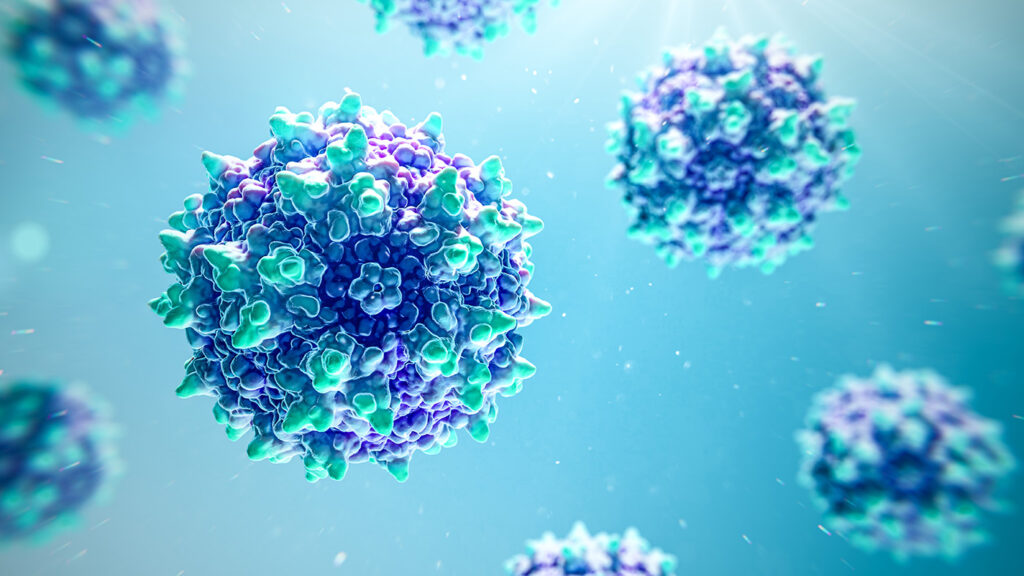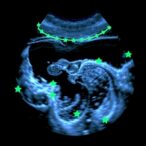
Leaders from the world of cell and gene therapy, including molecular geneticists, immunotherapists, physicians, nonprofit directors, and patient advocates, shared their personal stories and policy recommendations with leaders of the FDA in an extraordinary roundtable.
The roundtable was conducted in front of the FDA’s recently appointed top officials—director Martin A. Makary, MD, and Vinayak (Vinay) Kashyap Prasad, MD, director of the Center for Biologics Evaluation and Research. They were joined for the closing session by three other top healthcare leaders of President Donald Trump’s administration: Robert F. Kennedy, Jr., Secretary of the U.S. Department of Health and Human Services (HHS); the new NIH director Jayanta (Jay) Bhattacharya, MD, PhD; and Mehmet Oz, MD, administrator for the Centers for Medicare & Medicaid Services.
“You have an almost providential power… that we want to unleash,” Kennedy said, looking around the room. He challenged the experts to find regulations that should be removed. He also spoke about his excitement over regulatory progress to cover sickle cell disease patients around the country following the 2023 approval of Casgevy® (“exa-cel” or exagamglogene autotemcel), the first CRISPR gene editing therapy authorized by the FDA.
Bhattacharya recalled learning about sickle cell disease during his medical training. “I was shocked and saddened that there was no way to treat it. I never imagined that in my lifetime, we would have a cure…. [but] how do we make these advances scalable and affordable?”
The FDA stands for “gold-standard science and common sense,” Makary said in his opening remarks. “We’re interested in listening… We want to challenge deeply held assumptions.”
“We have the greatest brand in the world. We have to protect that brand and safeguard the public. We need to partner with developers and inventors to reduce barriers, cut waste, and get right what’s meaningful to the public.”
Makary pledged that the FDA should have a strong partnership with inventors and scientists, and companies. “We’re going to continue the successes of the FDA…. and try to improve by creating more efficiencies.” Areas of exploration included post-approval monitoring in the decision-making process and expanding access to priority review.
Prasad said the FDA would “make available therapies at the first sign of biological efficacy.”
“We want to open up the ‘black box’ at FDA,” he said, noting the value of randomized controlled clinical trials but expressing a desire to explore other trial designs, citing “iceberg plots” and “parachute trials.”
Interventional genetics
During a 90-minute roundtable, FDA leaders heard from more than a dozen leading experts in the cell and gene therapy community. Many praised the FDA for its role in expediting therapies, especially the recent work around a cure for “Baby KJ,” the infant treated in Philadelphia with a bespoke base editor for an ultra-rare, potentially fatal genetic disorder.
Others raised warning flags about regulatory overreach, the threat of offshoring advanced therapeutics development to China, and the brain drain of young talent.
Opening the roundtable discussion was Terrence Flotte, MD, dean of UMass Chan Medical School (and editor-in-chief of GEN’s sister journal, Human Gene Therapy). Speaking in his role as the new president of the American Society of Cell and Gene Therapy (ASGCT), Flotte spoke about recent progress in the gene therapy field, citing in particular the success of Zolgensma for spinal muscular atrophy. “[SMA] infants not only survive, but can sit, stand, and walk. This is completely unheard of,” Flotte said.
Genome editing pioneer David R. Liu, PhD, said that there were now 19 clinical trials ongoing using base or prime editing, with preliminary results from seven of those already announced.
“In all cases, the editor located the sequence, made the intended edit to perform chemistry on DNA directly, and benefit patients,” said Liu, the Richard Merkin Professor and director of the Merkin Institute of Transformative Technologies in Healthcare, vice chair of the faculty at the Broad Institute of MIT and Harvard, the Thomas Dudley Cabot Professor of the Natural Sciences at Harvard University, and a Howard Hughes Medical Institute (HHMI) investigator.
Liu highlighted two patients specifically. Baby KJ, who was discharged from the hospital 48 hours earlier and whose family, he noted, was interviewed on NBC’s The Today Show that morning. And a teenager with chronic granulomatous disease who had been successfully treated using prime editing. But “there aren’t enough CGD patients to allow this drug to be commercially viable,” Liu said.
“There is a huge need and an historic opportunity for FDA and HHS and this country,” Liu said. With some 10,000 known rare genetic diseases, the opportunity “created by this perfect storm moment is to provide on-demand genetic treatments like KJ at scale.”
“With sufficient organization and federal support and partnership with the FDA, I believe it will be possible by 2030 to treat at least 1,000 patients with personalized genetic treatments,” Liu predicted. “This would save billions in costs to manage their symptoms.” He added that “we need a national infrastructure for interventional genetics.”
Liu listed his top five priorities:
- Rapid response diagnosis and therapeutic development centers to identify and optimize gene-editing agents and their delivery vehicles
- Small-scale, fast turnaround chemistry, manufacturing, and controls (CMC) capabilities
- Cell, rodent, non-human primate, or virtual toxicology platforms
- Streamlined regulatory pathways for N-of-few trials
- Shared public-private platforms for all of the above, and for sharing clinical outcomes
“This opportunity is not just about treating 1,000 patents,” Liu concluded. “It is about building a modular system that turns rare disease treatment into a national engine for therapeutic innovation. Transforming personalized gene editing from bespoke science into scalable infrastructure would not only expand access to life-saving treatments but would also generate major insights from treating patients that will catalyze future waves of therapeutic innovation—and importantly, would secure America’s leadership in genetic medicine for the foreseeable future.”
China crisis
Several speakers raised concerns about the growing competitive threat from China. “Much innovation is happening offshore, outside FDA’s jurisdiction,” said Carl June, MD, the leading immunotherapy physician and director of both the Center for Cellular Immunotherapies and Parker Institute for Cancer Immunotherapy at the University of Pennsylvania Perelman School of Medicine.
The FDA did not need to regulate early-stage CGT trials, June said. Rather, June favored regulating autologous products like hemopoietic cells under local IRB supervision. He proposed a two-tier model like China. “The U.S. process is too slow, costly, and inflexible,” June said. Two biotech companies that have spun out of Penn are now conducting trials overseas, he said. And two major CAR-T trials presented at the recent American Society of Clinical Oncology conference both originated in China. “The next generation of treatments will emerge abroad. We are at a watershed moment,” June warned.
The bluntest warnings were presented by Tom Cahill, MD, PhD, co-founder and managing director of Newpath Partners. More than $150 billion has been wiped off cell-and-gene-therapy biotech valuations. The IPO markets are frozen. There is a failure of confidence, Cahill said, with “a foreign adversary eager to fill the void.”
Cahill added: “Treating every indication with a one-size-fits-all model leads to unnecessary delays, ballooning costs, and lost lives.”
Catherine Bollard, MBChB, MD, senior vice president and chief research officer at Children’s National Hospital in Washington, DC, said: “We need new models [and] public-private partnerships. It will require [the] government to solve this problem. Our children are not benefiting.”
Other panelists addressed the need to streamline regulations and expedite manufacturing to realize the potential of cell and gene therapy. Paula Cannon, PhD, distinguished professor of molecular microbiology and immunology in the Keck School of Medicine of the University of Southern California, praised the collaborative effort to treat baby KJ, showcasing the virtues of combining CRISPR and LNPs [lipid nanoparticles] in a plug-and-play approach.
Cell and gene therapy is “uniquely positioned to deliver therapies to patients with no other options,” said Cannon, a past president of ASGCT, but “we need to facilitate ways to expand access.” With more than 4,000 cell, gene, and RNA therapies in development, Cannon said, that is “a very big iceberg.”
Charles Gersbach, PhD, a co-founder of Tune Therapeutics, discussed the potential of genome and epigenome editing. “There is a dichotomy between the level of science and the level of enthusiasm in the biotech and investment communities,” stated Gersbach, who is also the John W. Strohbehn Distinguished Professor of biomedical engineering at Duke University, where he is director of the Duke Center for Advanced Genomic Technologies.
Challenges that still need to be addressed, Gersbach said, include the cost of manufacturing cell and gene therapies, patients’ latent immune responses to viral vectors, and delivering therapies to tissues beyond the liver.
Michelle Rengarajan, MD, PhD, who has two children with Duchenne muscular dystrophy (DMD), closed the panel. “We are so close to achieving escape velocity for Duchenne and so many other diseases,” said Rengarajan, of Mass General Brigham, Harvard Medical School, and the Broad Institute. She noted that more modest steps to improve the quality of life for patients, such as giving a DMD child the ability to lift their arms and type on a computer, can also be life-changing.
Lessons from KJ
Fyodor Urnov, PhD, director of technology & translation at the Innovative Genomics Institute (IGI) and professor of molecular and cell biology at the University of California, Berkeley, praised the public-private partnership that worked in such haste, beginning last summer, to produce a bespoke gene editing treatment for baby KJ, in a story that has captured enormous media attention. He praised colleagues at Danaher and its subsidiaries, the Somatic Cell Genome Editing program, and the FDA.
“The Office of Therapeutic Products of CBER played an absolutely essential role,” Urnov said, most importantly by prioritizing “the health of the baby.” He paid tribute to Super Office Director Nicole Verdun, MD, and her staff. “They made the return of Baby KJ possible,” he said.
Urnov drove home a point about the threat of a brain drain. “We have to protect this talent pipeline. This isn’t just about maintaining American biomedical leadership. It’s basically about making sure other nations frankly can’t compete.”
The last word (literally) of the session went to Urnov, who again thanked FDA leadership and quoted RFK Jr, who a few minutes earlier had said: “CRISPR gives the gift of life” and asked for permission to borrow the quote for his slides.
“There is so much innovation on the way… to help the next Baby KJ,” Urnov said. “You don’t need to do a randomized trial when you can see that parachutes save the lives of people jumping out of airplanes.”
“We can give American children like Baby KJ a remarkable future. We need to believe in American solutions.”



